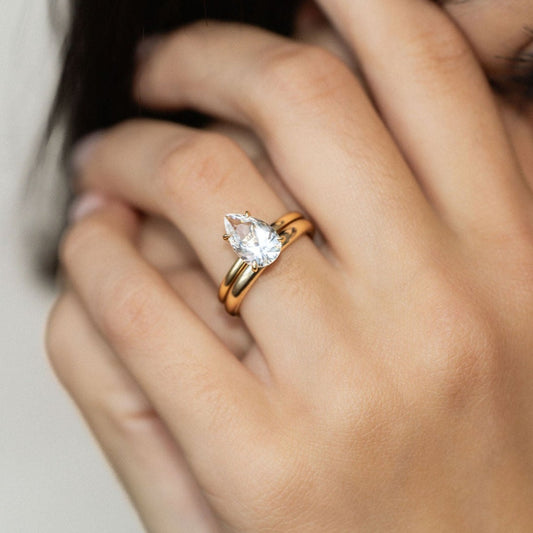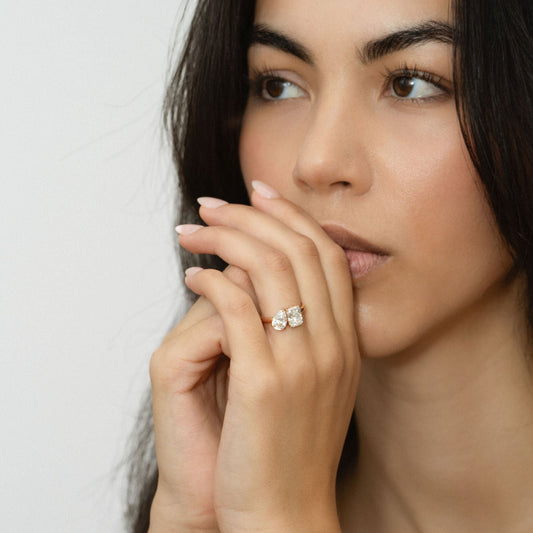When shopping for a diamond, the 4 C’s—Cut, Colour, Clarity, and Carat—are essential for evaluating its beauty and value.
1. Colour: What Do DEF and GHI Mean?Diamonds are graded on a colour scale from D (completely colourless) to Z (visible yellow or brown tint). The closer to D, the more colourless and valuable the diamond is.
-
D, E, F (Colourless):
These are the highest colour grades. Diamonds in this range are completely colourless and very rare. - D: The most colourless and desirable. No hint of colour even under magnification.
- E: Extremely slight traces of colour, only visible to experts with magnification.
- F: Very faint color detectable under magnification but still considered colourless to the naked eye.
-
G, H, I (Near Colourless):
Diamonds in the G–I range have a very slight tint, but it’s usually undetectable unless compared side by side with a higher-grade diamond. - G: Close to colourless; a high-quality diamond.
- H: Still nearly colourless, and a great option for those looking for value without noticeable color.
- I: A slight warmth of colour may be visible to some, but still looks white in most settings.
Diamonds from D–F will be more expensive because they are rare and offer the purest appearance. G–I diamonds, however, offer an excellent balance between beauty and affordability.
2. Clarity: Decoding VVS, VS, and SI
Clarity measures how flawless a diamond is. The fewer inclusions (internal flaws) and blemishes (external flaws), the higher the clarity grade. Let’s break down the different clarity levels:
-
Flawless (FL) and Internally Flawless (IF):
FL diamonds have no inclusions or blemishes visible under 10x magnification, while IF diamonds may have minor surface blemishes. These diamonds are extremely rare and expensive. -
VVS (Very, Very Slightly Included):
VVS1 and VVS2 diamonds have very tiny inclusions that are difficult to spot, even under 10x magnification. - VVS1: The highest clarity under the VVS category; inclusions are extremely hard to see.
- VVS2: Inclusions are slightly more visible but still very minor.
-
VS (Very Slightly Included):
VS1 and VS2 diamonds have minor inclusions that can be spotted with magnification, but not to the naked eye. - VS1: Inclusions are difficult to see under magnification.
- VS2: Inclusions are slightly more visible under magnification but still invisible to the naked eye.
-
SI (Slightly Included):
SI1 and SI2 diamonds have inclusions that are more noticeable and may be visible without magnification, though they generally don’t affect the beauty of the diamond. - SI1: Inclusions can be seen under magnification and may be visible to the naked eye in some cases.
- SI2: More visible inclusions, which can sometimes affect the diamond’s brilliance.
-
I (Included):
Diamonds with an I1, I2, or I3 grade have obvious inclusions that can be seen without magnification. These inclusions may impact the diamond's sparkle and overall look.
3. Cut
The cut is all about how well the diamond is shaped and polished. A good cut reflects light beautifully, giving the diamond that eye-catching sparkle.
4. Carat
Carat refers to the diamond’s weight, not size. One carat equals 200 milligrams. Bigger diamonds are rarer, and they typically cost more, but a smaller diamond with a great cut can shine just as brightly
Ma Folie’s Diamonds
At Ma Folie, we are committed to providing only the highest quality lab-created diamonds. That’s why we exclusively use diamonds in the DEF colour range (colourless) for the purest, most brilliant appearance. For clarity, we choose diamonds with VS (Very Slightly Included) or VVS (Very, Very Slightly Included) grades, ensuring that any inclusions are nearly invisible, even under magnification. This means you get a diamond that combines beauty and quality, without compromise.
Book a consultation here with our founder, Cathy, a GIA jewelry expert who will help you understand these grading scales and help you make an informed decision and find the perfect diamond that balances beauty, value, and budget!







